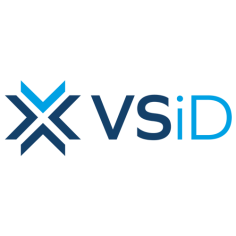Using QES for eWitnessing to Accelerate Conveyancing Transactions | VSiD
HM Land Registry (HMLR) has for some time been at the forefront in the promotion of digital methods to speed up transactions and reduce the risk of fraud. The pandemic was a catalyst in finding ways to work remotely and ensure that the sale and purchase of property and the related updates to the Land Registry were not delayed whilst ensuring the authenticity of title deeds and documents lodged with it.
In 2020 HMLR introduced a pilot scheme, whereby they would allow deeds to be electronically signed and witnessed under certain conditions and offered “Safe Harbour” to conveyancers who used this new method, meaning they would not be held to account should a transaction prove to be fraudulent further down the line. The new type of eSignature, as defined in HMLR’s Practice Guide 82 was labelled “Qualified eSignature” or QES.
Since that date, numerous law firms have taken part in the scheme and transformed their conveyancing process, resulting in fewer delays, lower risk of fraud and faster completions, meaning more satisfied clients and arguably more repeat business.
Following the success of its scheme, HMLR recently confirmed its acceptance of QES and has encouraged conveyancers to use this technology where possible. One of the huge benefits of the change is that physical witnesses are no longer required. In its announcement on the subject published on 1st August, HMLR stated “By removing the need for a third party to witness the execution of a deed, replacing this step with a highly secure electronic signature, the technology affords greater flexibility and simplicity.”
How does e-witnessing work?
In effect, the ID verification process, backed by a Qualified Trust Service Provider (QTSP) becomes the witness which is a far more reliable method than the existing “clunky” process. Gone are the days when purchasers or sellers would need to stop someone in the street to witness their signature on a document, not knowing the identity of that person or whether the address they provided on the document was correct. They might be uncomfortable with asking a stranger or even friend to have sight of their confidential document. Many people asked to be a witness would be sceptical about what they were signing and not willing to supply their personal details for something they had no knowledge of.
With QES the signer is identified with 100% accuracy during the signing process through the deployment of Near Field Communication (NFC), geo-location, 3D video liveness, biometric, anti-spoof and anti-tamper technology. The proof of the signature, recorded in an audit trail and authentication certificate offer far greater assurance than the manual methods.
Additional benefits to using a digital method
The authentication certificate mentioned above can be used to demonstrate to third parties and legal industry regulators that a high level of client due diligence (CDD) has been carried out.
Using a platform provider that offers QES with ancillary services such as the issuance of a HMLR Conveyancers Certificate, the completion of Know Your Client (KYC), Anti Money Laundering (AML) and other background screening and Source of Funds and PEPs and Sanctions checks leads to a more streamlined workflow.
With many fines currently being issued by the SRA for non-compliance, this method will provide assurance that risk is being lowered and therefore the threat of financial or reputational damage too.
VSiD is a UK Government listed Digital Verification Service (DVS) and offers solutions tailored to the needs of conveyancers. If you would like to find out how eWitnessing and QES works, please call us on 0207 965 7479.



